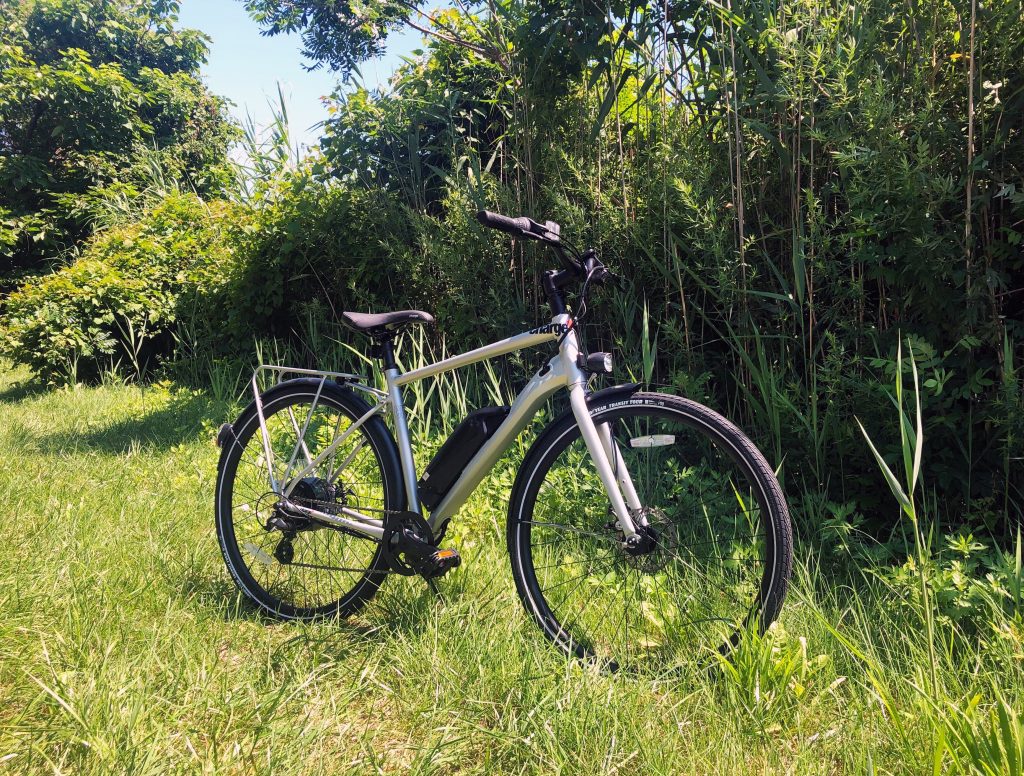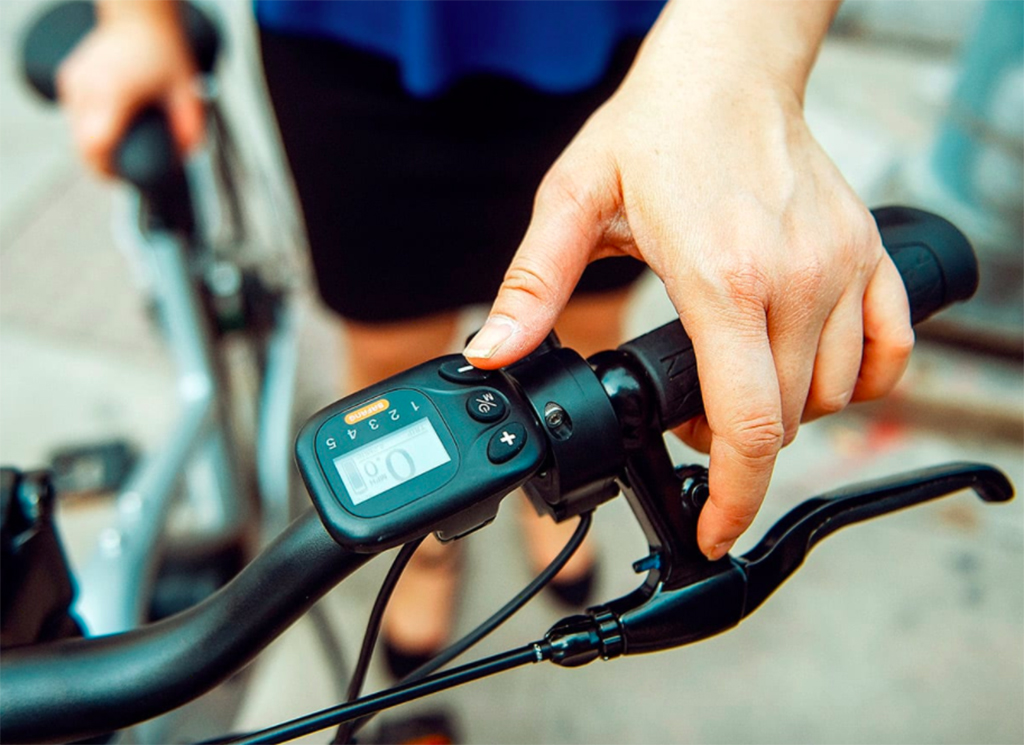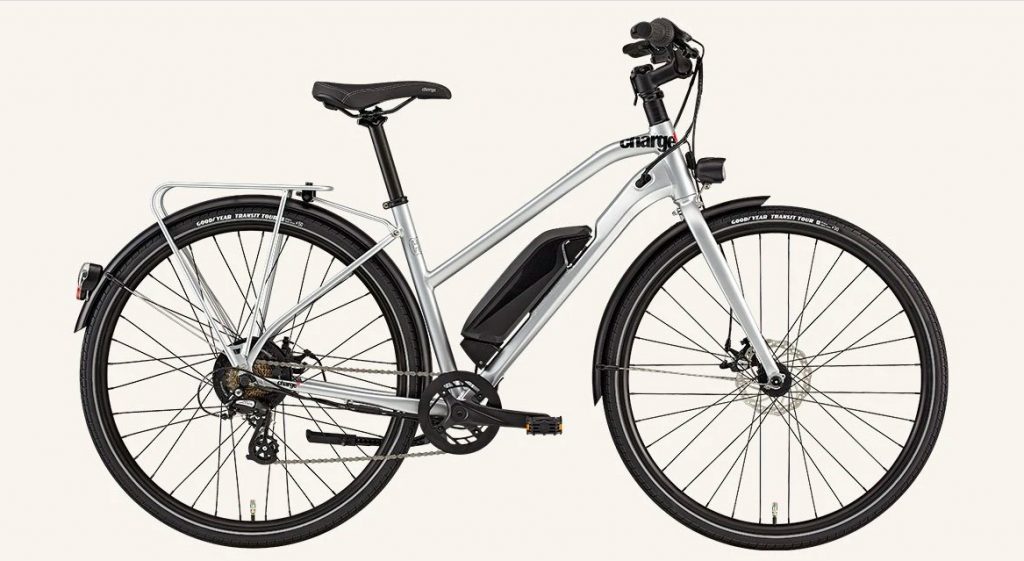Riding Across NYC on Charge’s CITY E-Bike
The brand’s major pivot provides riders with the power and confidence to traverse the boroughs

Getting from the northern tip of Brooklyn down to the Rockaways in Queens without a car can be a time-drain, and getting there while also avoiding the subway might seem impossible. This past weekend we rode the 34-mile (total) route—a distance that, for most, isn’t feasible with a regular bicycle—on Charge’s CITY e-bike. From Greenpoint, through Bed-Stuy and Flatbush, down to Sheepshead Bay and along the bike path at Plumb Beach, and over to the beach at Jacob Riis, the CITY provided the power—and the confidence to cycle what feels like quite an epic journey.
After a few rides around the neighborhood, it became clear that this machine (available in a high-step, diamond-shaped frame or lower, step-through style) is complex, but remarkably simple to use—even for rookies. The small, subtle handlebar display features pedal-assist (which can be used at five different levels) as well as a speedometer, distance traveled and battery life. Just below is the thumb throttle, which offers a tremendous boost. The buttons and throttle are easy to access, making changes to your ride super-fast.

The bike’s top speed is 20mph, but we find ourselves sticking around 12 to 15mph at the lowest level of pedal-assist. At this setting, you save some battery power and still feel like you’re really riding the bike and powering the wheels. The difference here isn’t speed (we are with somebody on a single-speed bike, riding just as fast) but the ability to keep going over miles and miles.
Assembly (which is just four steps) is surprisingly easy, with straightforward instructions and helpful imagery that make putting the CITY together far less intimidating—even for those who don’t know their way around the more complex workings of a bicycle. Part of the cardboard packaging acts as a stand for the bike during this practical process. Charge founder, Nick Larsen, tells us, “It’s all recyclable and almost entirely plastic-free. You should see how our competitors come packaged. However, in this day and age green packaging is not a marketing point; it’s mandatory.”

After making traditional bikes since 2004, Charge now offers three electric bikes—a pivot that Larson wanted to make for two years. “We always wanted our range of bikes to be concise and simple to understand and own, and we felt that the development of electric bike systems had progressed to a point that we were ready to commit to only making electric bikes,” he says. “Bikes can be a bit of a daunting thing to choose and purchase. It’s hard to work out what suits your needs the best. With Charge, we really looked at the whole experience of choosing, buying, assembling and owning an e-bike and did our very best to make each of those points as simple and as enjoyable as possible.”

The launch coinciding with a global pandemic (and the resulting decrease in use of public transport and an increase in cycling) was a strange coincidence. “The pandemic came right before we’d been planning to launch. It’s been an unusual time, but people are biking more than ever—to get outside, to stay healthy mentally, physically and emotionally—and are looking for simple solutions delivered straight to their homes,” Larson tells us. “I can say that it’s been great to see so many people enjoying bikes.”
The brand’s three bikes are the CITY and COMFORT, which are ideal for commuting and cruising, and the rugged XC for mountain biking. Each has a different set-up—from battery placement to seating positions—but all have range of about 50 miles per charge. (Our ride used about 85% of the battery life, and we never went over level two on pedal-assist.) All models feature folding handlebars and pedals (making them even more appealing for those in smaller homes), a lockable/removable battery, puncture-resistant Goodyear tires and, of course, pedal-assist. In addition to being utilitarian, these bikes are sleek and appealing—void of the muscly Mad Max aesthetic that many e-bike brands have adopted. Larson says this, of course, was intentional.

When reimagining Charge bikes, there were several crucial elements to incorporate. Larson explains the bikes had to be “easy to own—so they were really simple, confidence-inspiring and really comfortable and effortless to ride. Practical—so folding handlebars and pedals (to keep the footprint of the bike to a minimum for storage), tire pressure indicators and integrated lights are just some of the features that combined with things like the high-volume shock absorbing tires that make our bikes not only practical, but reliable day in and day out. And finally they have to look great! Whether you want something understated or bold, rugged or refined, we have it.”
Charge’s CITY ($1499), COMMUTE ($1499) and XC ($2299) are available for purchase online. Hero image by Katie Olsen.












